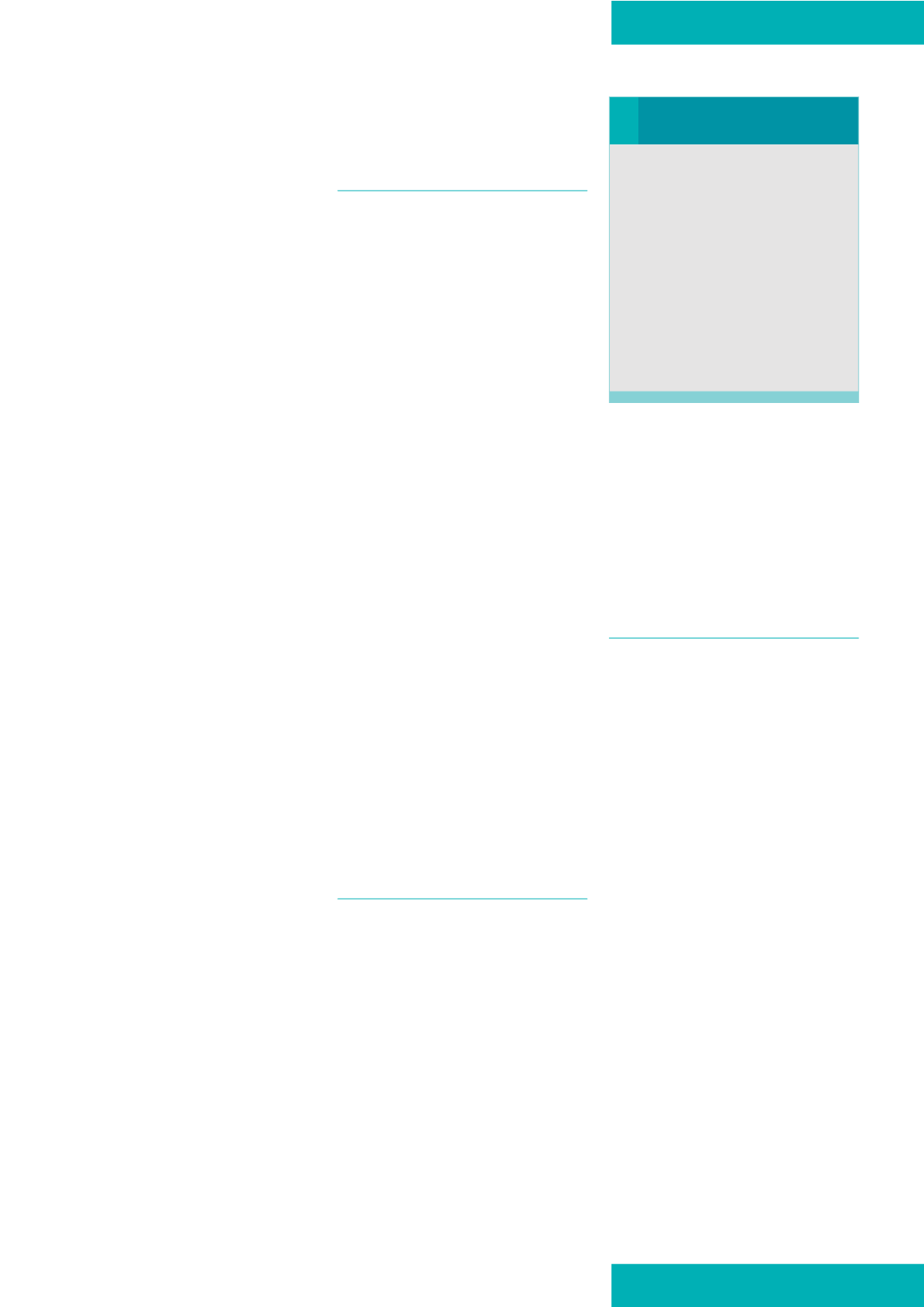

JCN supplement
2015,Vol 29, No 5
17
PALLIATIVE WOUND CARE
recognise the signs of infection and
instigate and monitor treatment.
If a wound becomes infected,
exudate volume increases, becoming
viscous and potentially malodorous,
with management focusing on
treating the infection systemically
or topically. Antimicrobial dressings
may also be used. Although it
is recommended that they are
discontinued once infection has
resolved and the exudate volume
decreased (Wounds UK, 2013),
in palliative care a decision may
be made to continue the use
of antimicrobial dressings or
antibiotics, particularly where
they are contributing to symptom
management, such as lowering
temperature, making the skin cooler
and lessening exudate volume —
all of which may make a positive
contribution to the patient’s comfort.
Pain control
The International Association for the
Study of Pain (IASP, 1979) defined
pain, highlighting its ‘unpleasantness’
and that it is both a physical and
emotional experience. Importantly,
pain levels can be improved when
an early assessment is performed
and preventative measures taken
(WUWHS, 2007b).
Patients receiving palliative care
may have more than one pain, and
each may have a different cause. The
types of pain relevant to wounds in
palliative care are soft tissue, bone/
muscle, and neuropathic pain. For
soft tissue injury, the World Health
Organization (WHO) analgesic
ladder may be used
(www.who.int/cancer/palliative/painladder/en/):
`
Step 1: non-opioid +/- adjuvant
`
Step 2: opioid for mild-to-
moderate pain, +/- non-opioid,
+/- adjuvant
`
Step 3: opioid for moderate-to-
severe pain, +/- non-opioid,
+/- adjuvant.
The EWMA (2002) position
statement established that the
majority of pain experienced by
patients with wounds was during
dressing changes. Thus, it is
important that clinicians choose
dressings which minimise pain at
dressing change and which can best
barrier protection, appropriate
dressings and silicone medical
adhesive removers can contribute
to optimal care. Not only is this a
professional responsibility (Nursing
and Midwifery Council [NMC], 2015),
but also a duty of care, and legal
responsibility in Civil and Criminal
law (Dunn and Leyshon, 2007).
REFERENCES
Adderley UJ, Holt IGS (2014) Topical agents
and dressings for fungating wounds.
Available online:
http://onlinelibrary.
wiley.com/doi/10.1002/14651858.
Cochrane Database of Systematic Reviews
CD003948.pub3/full
Bird C (2000) Managing malignant
fungating wounds.
Prof Nurse
15(4): 253–6
British Dermatological Nursing Group
(2012)
Best Practice in Emollient Therapy
.
3rd edn. Available online:
www.bdng.org.uk/documents/emollientbpg.pdf
Cameron J (2004) Exudate and care of the
peri-wound skin. Nurs Standard 19(7):
62–8
Collier M (2000) Management of patients
with fungating wounds — a holistic
approach.
Nurs Standard
46–52
Cutting K (2003) Wound exudate:
composition and functions.
Br J
Community Nurs
Supplement: 4–9
Draper C (2005) The management of
malodour and exudate in fungating
wounds.
Br J Nurs
54
Dunn D, Leyshon S (2007)
The legal, ethical
and professional aspects of wound care
.
Wound care Society No 1
European and US National Pressure Ulcer
Advisory panels (EPUAP and NPUAP),
Pan Pacific Pressure Injury Alliance
manage the volume of exudate being
produced, as this will help to reduce
the frequency of dressing changes.
AIM OF WOUND DRESSINGS
As said, the overall aim of palliative
wound care is to manage exudate,
odour, pain, and bleeding (Adderley
and Holt, 2014), thereby keeping the
patient as comfortable as possible.
Several modern wound management
categories, including alginates,
silicones and foams can help to
achieve this aim.
Clinicians should consider several
questions to guide their dressing
choice (Stephen-Haynes, 2014),
namely:
`
Is the dressing conformable
and comfortable?
`
Is it suitable to be left in place for
a long duration?
`
Will the dressing prevent leakage
between dressing changes?
`
Does the periwound area need a
preventative skin protector?
`
Is it easy to remove?
`
Is it easy to use?
`
Is it cost-effective?
`
What sizes are available?
When removing dressings, it is
important to prevent pain, trauma,
and bleeding, or cause any damage
to the periwound skin. Where an
adhesive dressing is used, a silicone
adhesive remover may help with
pain-free dressing removal (Stephen-
Haynes, 2008).
CONCLUSION
Palliative wound care requires
clinicians to consider several factors
in relation to assessment, prevention,
management and maintenance.
By introducing effective wound
management plans that reduce
symptoms such as malodour, exudate
leakage, pain and bleeding, clinicians
can not only improve the patient’s
quality of life but also lessen the
burden for family members who are
caring for a relative who is dying. It is
also important to provide information
and offer practical and emotional
support. Appropriate preventative
strategies are also essential due to
skin changes and decreased general
health. The use of emollients,
i
Practice point
Malignant wounds situated near
major blood vessels can be at risk
of severe bleeding (haemorrhage).
Such bleeding can be extremely
frightening both to patients and
their families and, indeed, less
experienced staff. Dark towels or
blankets can mask the appearance
of blood and having experienced
healthcare professionals on hand
can help to provide support in
these situations.
JCN









